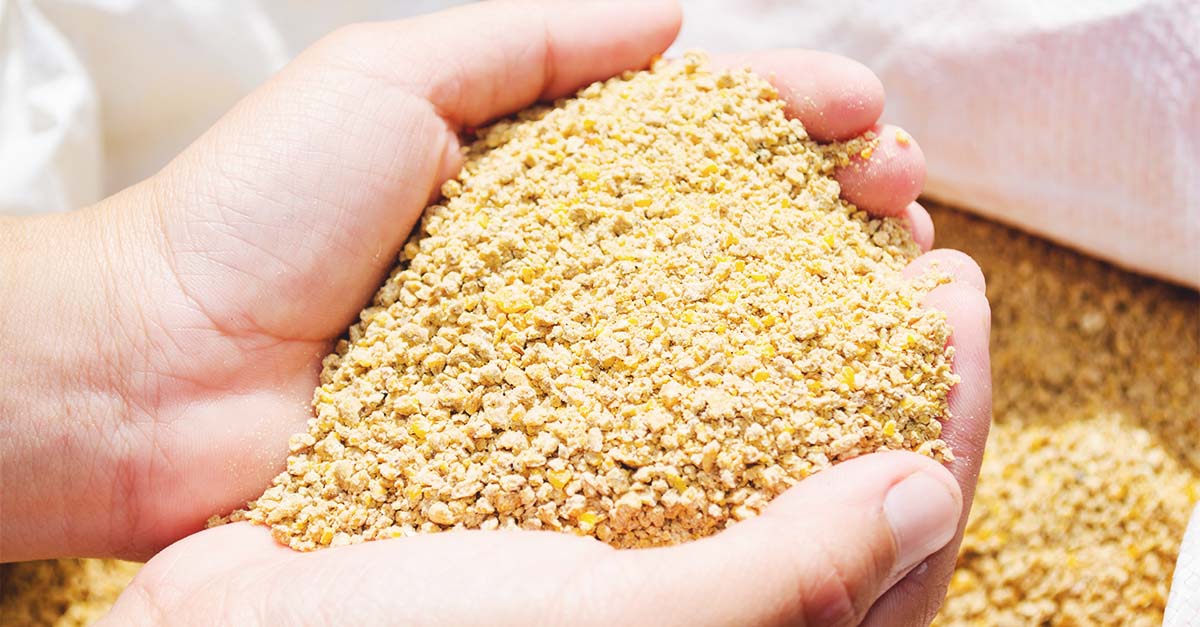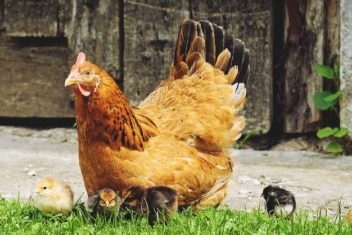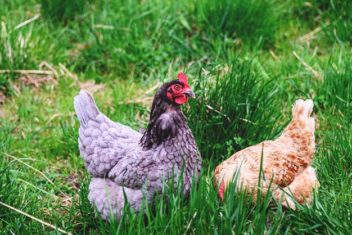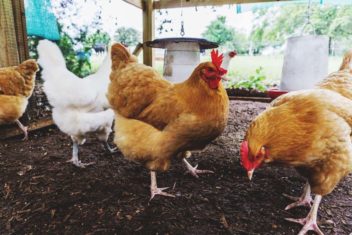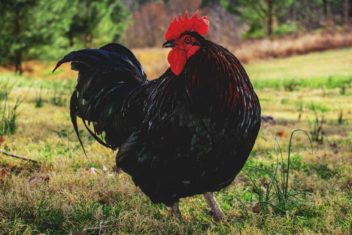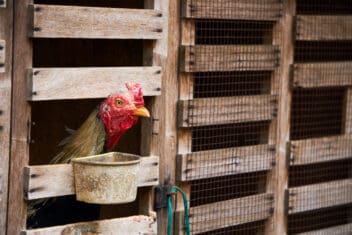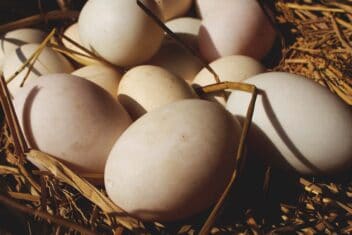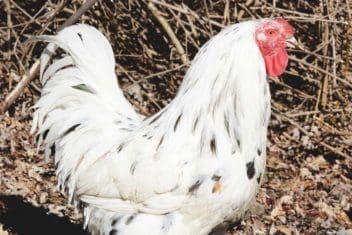Whether you are trying to save some money on your homestead or you simply want to boost the health of your backyard chicken flock, if you ferment your chicken feed is a great place to score on both. This process, which takes mere minutes, increases the available nutrients in the grains, enhances its digestibility, and also provides your chickens with much-needed probiotics.
Not sure where to start? We’ll walk you through the many benefits of fermented grain – as well as how to make and feed your chickens fermented grain at home.
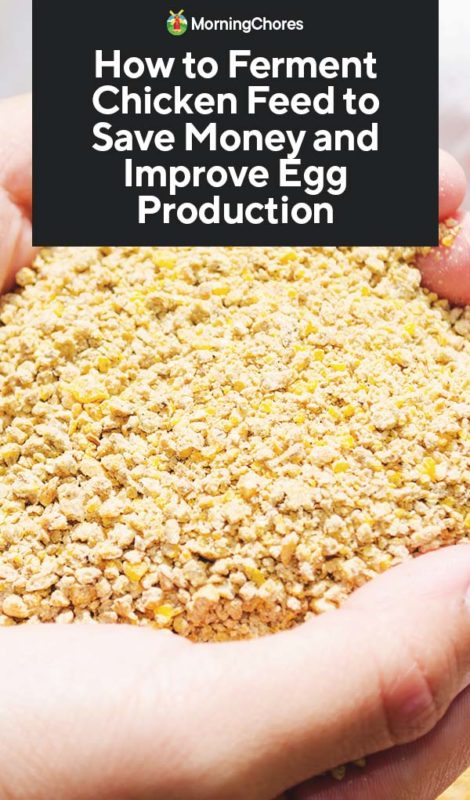
The Many Health Benefits of Fermented Grain
Simply put, fermented chicken feed exists as the chicken equivalent to the probiotic rage for us humans. If you haven’t caught on to this latest health craze yet, it has to do with the understanding that it’s crucial to have a healthy population of beneficial bacteria, such as Lactobacillus and Pediococcus, in your gut.
Probiotics have a lot of benefits, both for us and for chickens. They help stave off illnesses and they support healthy digestion.
Fermented chicken feed is made through the process of lactic acid fermentation. This is the same type of fermentation that helps to produce sauerkraut. When you soak your chicken grain, it will improve the digestibility of the mixture by lowering the enzyme inhibitors and phytic acid present in all seeds, grains, and legumes.
As the fermentation process begins, bacteria will consume sugar. These bacteria will begin to multiply, producing more lactic acid that will kill off bad bacteria and only helpful bacteria will remain.
Fermentation breaks down the starch in the feed, increasing the levels of various vitamins. It also boosts the usable protein content in the feed.
Lacto-fermented chicken grain both preserves and improves the quality of food. It neutralizes acidity in the digestive tract, offers digestive balance, and even aids in the digestion of nutrients.
It can strengthen your flock’s immunity and help destroy toxic compounds that make their way inside a chicken’s sensitive stomach, too. It does this by developing a natural intestinal barrier to pathogens like Salmonella and E.coli.
Other Benefits of Fermented Grain
Caption: Improved egg production is one of the many benefits of fermenting chicken feed.
But wait – there are other benefits to fermenting your chicken grain, too. Here are a few.
1. Saves Money
As your chickens become better and more efficient at digesting their feed, they will consume less feed overall while still putting on the same amount of weight and producing the same egg output. That means more money being saved.
2. Improves Egg Production
Regardless of whether you are raising your chickens for commercial egg production or to just have a few each day for breakfast, fermenting grain is a smart choice. It can increase shell weight, overall leg weight, and even eggshell thickness.
3. Enhances Nutrient Density
Multiple studies have found that fermented chicken feed lowers the anti-nutrients that are typically present in grains. As a result, the feed that your chickens consume will have greater bioavailability of important minerals and vitamins during the digestive process. It even produces new vitamins that you wouldn’t normally find, such as niacin, folic acid, and thiamin.
How to Ferment Chicken Feed
Caption: Any kind of commercial feed can be used to make fermented chicken feed.
Making your own fermented grain is super easy, and it requires very little besides the grain that you are already purchasing. Here’s what you need to do:
Supplies Needed
You have some options when it comes to supplies for your fermented chicken grain, but most supplies can be easily fashioned out of items you already have lying around the house.
You will need:
- A fermenting vessel (any five-gallon food-grade bucket or smaller will do)
- Dry grain (any commercial feed will do – try not to use mash, as it can be difficult to strain or anything with brewer’s yeast, which will encourage alcoholic fermentation)
- An old towel
- Dechlorinated water (if you don’t have a water filter, let it sit for about 24 hours at room temperature – chlorine is designed to kill the healthy bacteria that you are trying to create)
Instructions
1. Start by pouring your dry grain into a bucket. Allow it to be about half to three-quarters full but don’t pack it down. You need to provide room for expansion.
2. Add the water to your bucket. Let it completely cover the grain – again, make sure you allow room for expansion but be sure the grain is totally covered. Grain that is not covered will become moldy.
3. Cover the bucket with your towel. Stir it on a daily basis, making sure you loosen the particles at the very bottom, too. You may need to add additional water to keep the grain submerged.
Additional Tips for Fermenting Grain
Over time, bubbles will start to form. If you’ve ever made sourdough bread, you’re probably familiar with the smell that develops as the starter ferments. You’ll get a similar smell with your fermented grain. However, it should not smell rancid in any way. If it starts to smell rotten, throw it out and start over – don’t feed it to your chickens.
Don’t worry if you see some cloudiness at the top of your mixture. You might even see some film or foam develop. This looks scummy and gross, but it’s not dangerous – it’s simply a sign that the bacteria is doing its job.
On average, the fermentation process will take about three to four days. The grain will be soft and have a pleasant smell. When it’s done, you can strain the grain and keep the liquid for the next batch. You don’t have to toss the liquid – you can reuse it, as it already contains the helpful probiotics that you can use to start your next batch. Just pour it into a new bucket.
You can ferment grain indefinitely. As long as the grains stay submerged in the lactic acid, they are preserved – they just might become too sour over time! You may want to swap out your solutions on a regular basis to prevent this souring process, as it can create an off-putting flavor for your chickens.
If you notice that your fermented grain has an alcohol smell, don’t feed it to your chickens right away. Instead, add one tablespoon of apple cider vinegar per gallon to balance out the mixture.
Finally, if you use a plastic container to ferment your chicken grain, be sure it is BPA-free. Acids in Lacto-fermentation can increase the likelihood that BPA is leached into the liquid.
How to Feed Fermented Grain
Our chickens go nuts when they see us coming over with a bucket of fermented grain – I think they can smell out! Try to spread out the fermented feed into multiple feeders so that they all get the chance to snack on it.
You may find that your chickens go crazy over the fermented feed, even fighting over access to it, during the first few hours you’ve put it out there. After a few hours or a day, though, they lose interest. As a result, you shouldn’t feed a large amount of fermented feed at a time – just give them enough to entice them in the short term.
Can Other Animals Benefit From Fermented Grain?
Absolutely. We have fed fermented grain not only to our chickens but also to our pigs. Fermented feed can be fed to other livestock, too, including cattle, goats, and other poultry. Just make sure you’re using the right type of feed per species.
Not only do these animals benefit from increased levels of vitamins, minerals, and usable protein in the fermented feed like chickens do, but it can also increase their productivity and feed conversion as well. In cows, for example, there’s a lot of evidence to suggest that fermented feed can improve milk supply.
How Often to Feed Fermented Grain
You don’t have to feed fermented grain every day for your chickens to see the benefits, but that doesn’t mean that you shouldn’t. Most people don’t feed fermented feed each day just because it takes some extra time and effort to bring it out to them and clear it away when they are done.
You can feed fermented grain in the same quantities as you would normal grain. Just keep in mind that, if you’re not taking feed out every day to give to your chickens, your mixture might begin to lose oxygen. Just stir it each day, regardless of whether you feed it out or not, and you should be fine.
Otherwise, you’re free to feed your chickens as often as you like. However, you should still provide the other main staples of your chickens’ diets too, such as fresh greens, protein sources (like mealworms) and dry grain. By doing this, your chickens will have a balanced diet – and they’ll save you money in the meantime, too.
